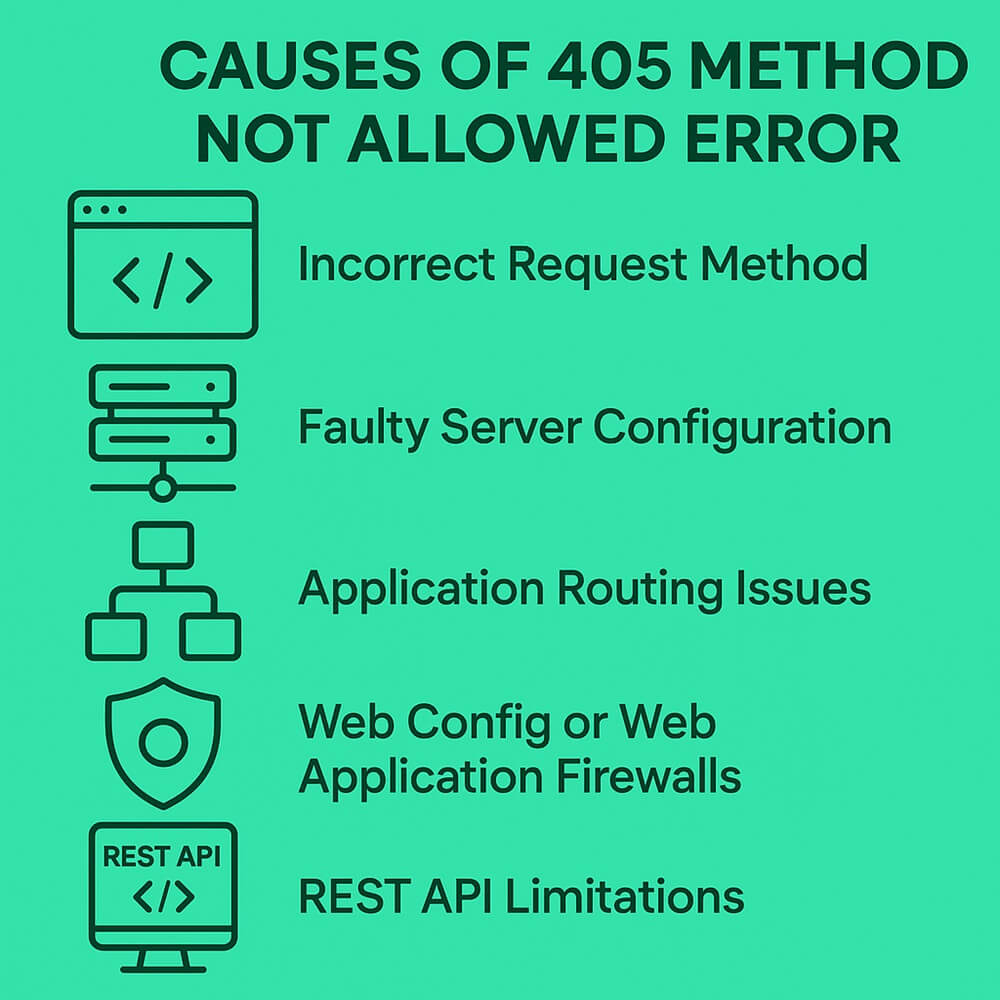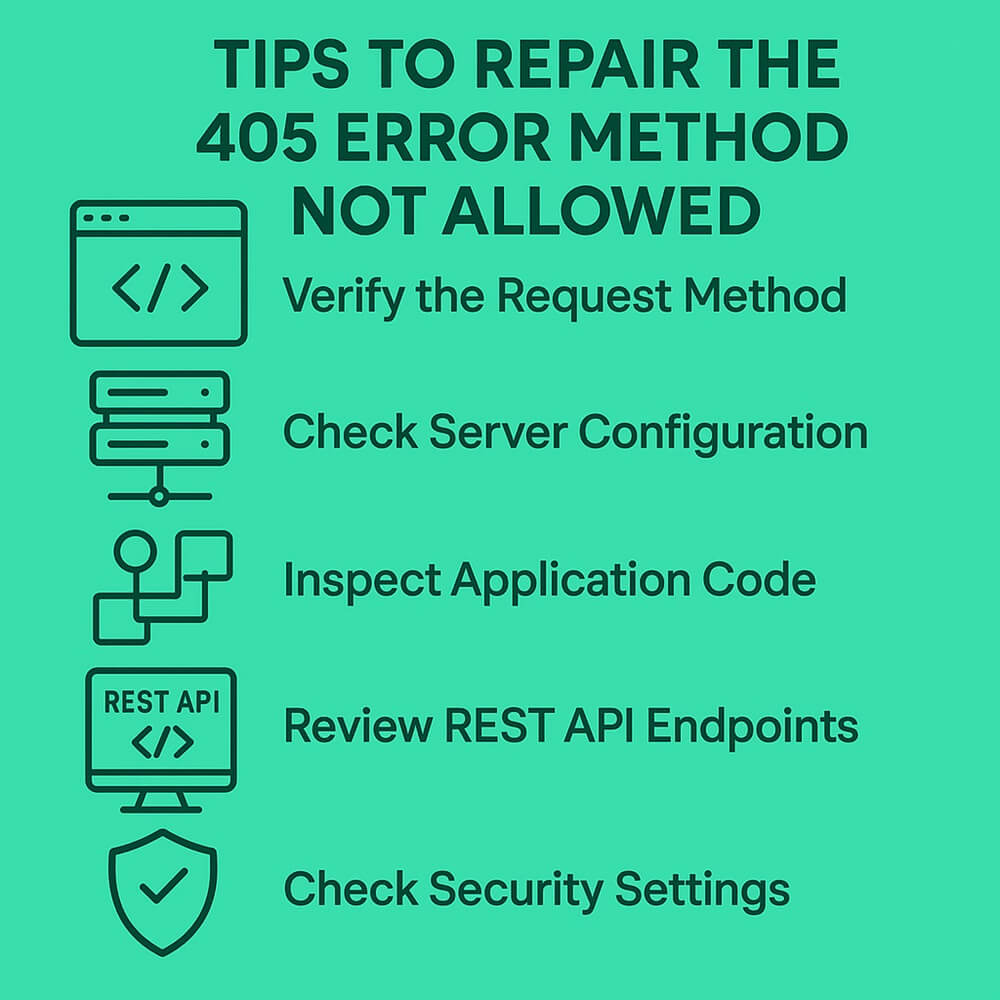Website errors can be annoying, particularly when they interrupt important activities.
Some of the most common mistakes that might be encountered by web developers, in addition to users and API consumers, are the 405 Method Not Allowed error. It belongs to the group of HTTP status codes and generally marks a misunderstanding between the client and the server.
In this blog post, we are going to discuss what the 405 error means, why and how it happens, and what is most important for you – how to fix the 405 Not Allowed error with actual solutions.
What is a 405 Error?
The 405 error is the HTTP response status code of the server that understands the request method he has not approved for the given resource. This is officially referred to as HTTP 405, Method not allowed.
For instance, in a case in which you want to use a POST method on a resource that only allows GET, the server will have a 405 status code.
Causes of the 405 Method Not Allowed Error

Reasons why you have found yourself facing a code 405 error:
1. Incorrect Request Method
A client (browser or app) is requesting this in a way of POST, PUT or DELETE, but the server only supports GET or HEAD requests to work against this resource.
2. Faulty Server Configuration
Servers such as Apache or NGINX may be incorrectly configured and deny access to some methods, resulting in a 405 error.
3. Application Routing Issues
In web frameworks, the occurrence of incorrect route definition or route handlers for particular HTTP methods may result in http 405 errors.
4. Web Config or Web Application Firewalls
Some of the security tools or firewalls can block certain HTTP methods on the grounds of security and therefore trigger a 405 status code.
5. REST API Limitations
In APIS, more specifically, RESTful services, the 405 error code in REST API generally means that the method is not supported for being requested.
Tips to Repair the 405 Error Method Not Allowed

Now that you know the reasons, let’s discuss how to fix the 405 Method Not Allowed error.
1. Verify the Request Method
Make sure you use the correct HTTP method in the call for the targeted resource. Refer to the API documentation or server specifications to know the supported methods.
2. Check Server Configuration
Check the server configuration files (for example, .htaccess for Apache or nginx.conf for Nginx) to find any directives that could prevent the usage of some methods. Turn these settings on to allow the required methods.
3. Inspect Application Code
Review the routing and the controller logic of the application to make sure that HTTP methods handled by the application are correctly addressed. Change the code in order to provide the necessary methods if required.
4. Review REST API Endpoints
For RESTful APIs, check if indeed the endpoint is built to accommodate the method that is being used. If a POST request is being returned with a 405 error, then it is possible the endpoint only supports fetch using the GET method. Adjust the request method or change the API to support the desired request method because it clearly says that 405 method not allowed POST.
5. Check Security Settings
Some HTTP methods could be blocked by the security configurations, such as firewalls or security plugins. Check these options to make sure that they allow the required methods of your application.
What to Do to Avoid 405 in the Future
- Don’t limit unnecessarily in .htaccess or NGINX config files. Regularly audit your server rules.
- The pre-deployment testing of every endpoint with various HTTP methods is performed before deploying updates.
- Make sure developers and content managers know the significance of their use of the right HTTP methods, particularly on forms and API integration.
To Sum Up
The 405 Method Not Allowed error is a reliable pointer that the specified resource does not allow the HTTP method that has been used. Even if you encounter it in a browser, a CMS, or even a REST API, knowledge of the root cause makes our troubleshooting easier.
Using the guide above, you can not only fix the 405 error, but you will also avoid its recurrence.
Still struggling with a 405 error? Contact Websouls with your problem details – we’re here for you!






